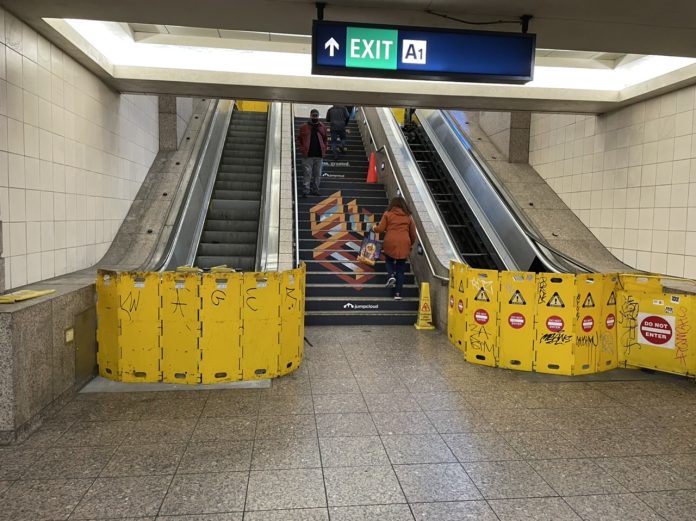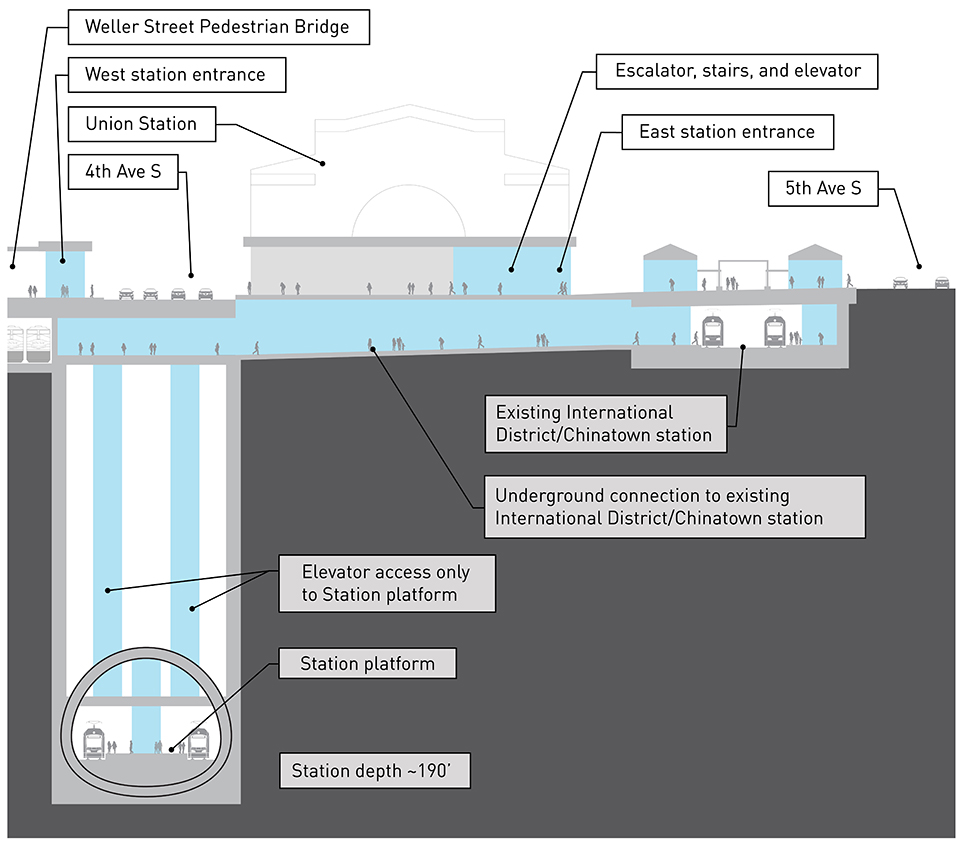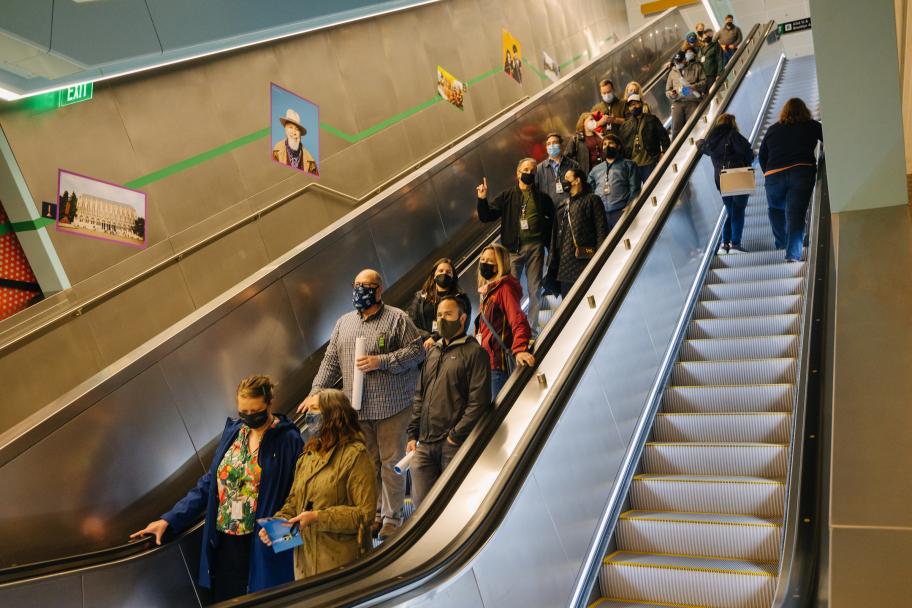
Sound Transit’s elevators and escalators have become a bit of a punchline and are routinely out of service, as The Urbanist reported in November. The agency inherited a slate of equipment from King County Metro that is simply well past design life. Others are relatively modern but frustratingly unreliable, as minor issues are not fixed as quickly as they could and should be.
In Downtown Seattle, Sound Transit’s elevator availability reached a pandemic low of 82%, which the agency said it had increased to 96% by November, but that’s back down to 90% as of April. Meanwhile, escalator availability went from a pandemic low of 30% to 71% last fall, which is still abysmally low. Needless to say, there are complex reasons for why equipment in the system is failing so often. But to riders, the why isn’t as important as the fact that they experience out-of-service escalators and elevators as a daily occurrence.
The reality is that Sound Transit has a vertical conveyance crisis on its hands.
In recent years, riders have documented how unexpected and inconvenient outages make navigating stations an obstacle course challenge. It’s not unusual for multiple outages to force riders to zig-zag through the station to navigate it or just consign themselves to using stairs instead. For disabled riders, this situation quickly becomes untenable. An elevator outage may mean they have to use an entirely different station entrance than intended or find entire stations inaccessible.
The agency will rightly point out that it has made strides in enhancing maintenance contracts, hiring more vertical conveyance staff, and developing plans to replace escalators and elevators in the Downtown Seattle Transit Tunnel (DSTT) stations. For example, replacement of DSTT equipment is expected to be spread out over a nine-year period finally concluding in 2031. The earliest bit of replacement equipment may come next year for International District/Chinatown Station and be operable in late 2023 or early 2024, but that’s just one of four stations.
For many riders, the pace of replacement isn’t enough to restore confidence in the system now and that’s likely to be the case for many years to come if policymakers don’t take more immediate action. This situation is increasingly doing damage to Sound Transit’s brand and discouraging people from using the system. Many have told us that they’ve given up on using certain stations due to the frequent escalator and elevator issues, and a few have said they have thrown in the towel on riding light rail completely.

Escalator and elevator reliability is also an issue that could jeopardize system expansion plans. Sound Transit is asking riders to trust it with stations planned to be very deep in Downtown Seattle when it adds Ballard Link to the network. The agency’s preferred option for Midtown is 140 feet deep, its preferred option for Westlake is 135 deep, its preferred option for South Lake Union is 120 feet deep, and the agency still hasn’t eliminated a 190-foot deep option for Chinatown-International District. If Sound Transit wants to have success with very deep stations, they need to raise confidence in their ability to operate escalators and elevators at a very high rate of reliability and efficiency and ensure riders can get between the surface and platform in a timely manner, which is a key principle for us. They need to show they will prioritize the rider experience instead of only taking the path of political expediency and least resistance.
It’s time for Sound Transit to address the problems head-on right now. With this in mind, we are launching a campaign to urge the Sound Transit Board of Directors to take the following 10 actions to more urgently address this crisis:
- Increase the target availability of escalator and elevators to at least 98%;
- Fully commission and complete design work this year for replacement of all escalators and elevators in Downtown Seattle Link stations;
- Complete replacement by the end of 2023 of all escalators and elevators in Downtown Seattle Link stations;
- Cross-train staff to restart escalators for minor outages where possible;
- Hire as much staff as needed to conduct repair and maintenance work during all system operational hours, including for rapid response;
- Purchase sufficient spare equipment for spot replacement;
- Improve real-time, widely available communications when equipment is offline;
- Provide realistic estimates for equipment service restoration, including estimate notices on offline equipment;
- Study best practices and equipment by major transit operators internationally so that this systemic problem is not replicated in the future; and
- Set aside at least $100 million to accelerate the above actions.
Additionally, we ask Sound Transit boardmembers to commit to regularly taking transit. To those not already in the habit, we say: Get out there and start riding your local bus routes. Find reasons to ride Link and Sounder. Maybe even hop on a streetcar. It can be a fun way to get around and you will glean a more intimate understanding of what your constituents experience every day.

We ask this because this is the best way to ground your decisions and understand the repercussions of letting issues like dilapidated escalators fester. Regular transit riders can also understand the joy of when things go seamlessly. Boardmembers tuning into one or two digital meetings a month from home to make critical decisions around transit policies and projects isn’t enough. Good decision-making comes from on-the-ground experience.
Riders of Sound Transit deserve having policymakers make knowledgeable decisions about their future. If boardmembers aren’t willing to commit to providing high quality dependable transit service, they should step aside and hand their board positions over to leaders that will.
We have big issues facing transit. It’s time to get to work on addressing them.
Please take a few moments to send a letter to the Sound Transit Board of Directors by using our online petition. Or you can write your own letter to agency board by reaching out to them directly via email.
The Urbanist’s editorial board consists of Natalie Argerious, Stephen Fesler, Shaun Kuo, Ryan Packer, and Doug Trumm.
The Urbanist was founded in 2014 to examine and influence urban policies. We believe cities provide unique opportunities for addressing many of the most challenging social, environmental, and economic problems. We serve as a resource for promoting and disseminating ideas, creating community, increasing political participation, and improving the places we live.


